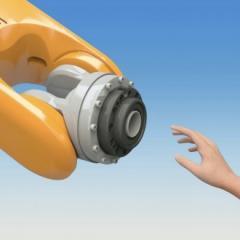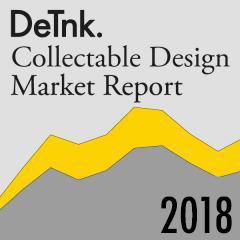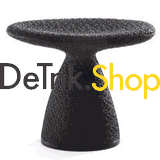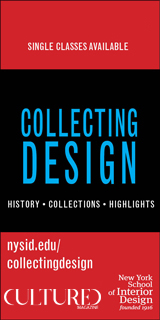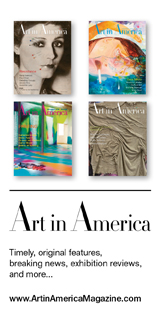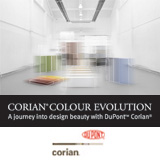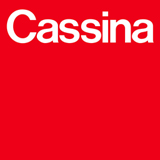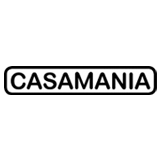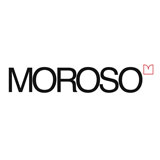fear and love – reactions to a complex world at the Design Museum London
24 November '16 – 23 April '17
Fear and Love, the opening exhibition at the Design Museum in Kensington, presents eleven installations by some of the most innovative and thoughtprovoking designers and architects working today.
These newly commissioned works explore a spectrum of issues that define our time, including networked sexuality, sentient robots, slow fashion and settled nomads. The exhibition shows how design is deeply connected not just to commerce and culture but to urgent underlying issues – issues that inspire fear and love. This is a multidisciplinary and global exhibition that aims to capture the mood of the present and establish the Design Museum as the home of design debate.
In response to the recent Brexit vote, OMA, the architecture practice founded by Rem Koolhaas, presents The Pan-European Living Room. Furnished with a piece of design from each of the 28 EU member states, the installation proposes that our very notion of the domestic interior has been
shaped by an ideal of European cooperation and trade. The centrepiece of the room is a vertical blind in the form of the OMA-designed barcode flag for the EU.
Fashion designer Hussein Chalayan, the only UK-based designer in the exhibition, has produced a series of wearable devices that detect your emotions and project them for the outside world to see. The installation, entitled Room Tone, addresses the idea of repressed emotions, exploring the everyday anxieties connected to city-living, from fear of terrorism to sexual desire.
A multidisciplinary designer based in Pittsburgh, Madeline Gannon has created custom software to transform a 1200kg industrial robot into a living, breathing mechanical creature named Mimus. More than a tool for performing repetitive tasks, Mimus is able to sense and respond to your presence as you near her enclosure. With support from Autodesk, Gannon shows that despite our collective fears and anxieties surrounding robotics, we have the power to foster empathy and companionship between humans and machines.
Architect Andrés Jaque, based in New York and Madrid, explores the way network culture is defining new forms of behaviour and interaction. Focusing on dating apps, his audio-visual installation Intimate Strangers presents a series of tales about how our pursuit of sex and love through social media is changing the way we view the city, our bodies and our identity.
Arquitectura Expandida, an activist architecture collective from Colombia, is creating a replica of a school that they have designed and built in one of the most disadvantaged communities of Bogota. The structure, Potocinema, houses a series of videos by young people from the school in Bogota, who are reflecting on fear and love in their neighbourhood.
Tokyo-based Kenya Hara, the graphic designer and art director of Muji, has examined what we eat to create Staples - a graphic display about the most common staple foods around the world. Hara shows that the roots of our cultural identities, from landscape to cuisine, lie in the grains that we
consume daily.
The graphic designers Metahaven, based in Amsterdam, present a film about the marine wildlife conservation group Sea Shepherd. The film Love Letter to Sea Shepherd, accompanied by a series of highly graphic flags, is a work of advocacy in support of the organisation’s anti-whaling activities, but also a meditation on forms of intelligence that we barely understand.
Neri Oxman, an architect, designer and professor at MIT in Boston, has created a series of death masks called Vespers using ultra-high definition 3D printing. Created in collaboration with the Mediated Matter Group, the pieces have been designed for the "The New Ancient" Collection by STRATASYS, Ltd. Reviving this ancient ritual object traditionally made using wax or plaster with state-of-the-art technology, Oxman speculates on how wearable accessories might help to transform us at the end of our lives. This new body of work is the culmination of a project that recently included a mask created for Björk.
Hong Kong-based Rural Urban Framework explores how the nomads of Mongolia are adapting to urban life, giving up traditional freedoms for the difficult conditions of unplanned settlements. Their installation City of Nomads is a structure that examines how to adapt the traditional ger (yurt)
for a more communal life. A transformed ger will be constructed in the exhibition to provide visitors with an insight into a different way of life. Dutch product designer Christien Meindertsma’s installation Fibre Market explores the potential of recycling textile . Noting that there is almost no culture of textile recycling, she examines the lost value of 1,000 discarded woollen sweaters, turning their fibres into a highly physical and colourful presence in the exhibition.
Chinese clothing designer Ma Ke presents her ongoing project Wuyong, or ‘Useless’. Ma Ke’s philosophy is to create clothes that have a strong connection to the land and the rural traditions of China. Rejecting consumerism and ‘fast fashion’, she treats her clothes as forms of artistic but also ethical expression.
designmuseum.org






